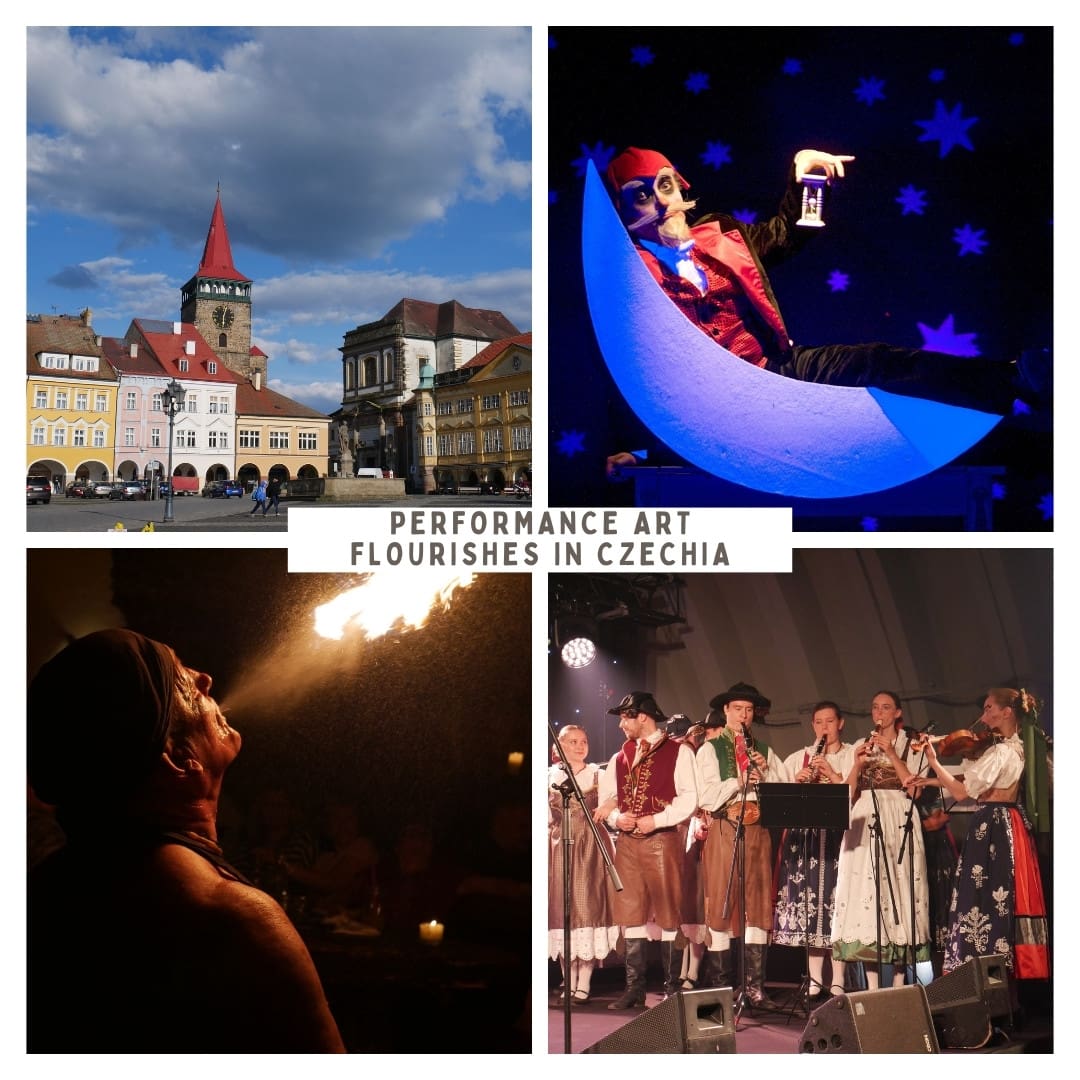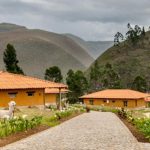
ARTS ENSEMBLE IN CZECHIA
TED DAVIS
Traditions of a musical nature run deep in the Czech Republic, which this year is celebrating an anniversary 200 years in the making.
The 2024 “Year of Czech Music” is being held at the same time as a tribute to Bedřich Smetana, who was born 200 years ago and is considered the father of Czech music. Smetana is held in the same high regard as Antonín Dvořák and Gustav Mahler, Czech superstars of classical composition in their own right.
“In music is the life of the Czechs”, said Smetana, reflecting that music opens people’s hearts and reaches depths beyond words. This current Year of Czech Music is exceptional in that its central theme is a celebration of this composer.
But music of all styles are being honoured and highlighted as a part of the event. For example, Czech Tourism is inviting visitors to explore the places where famed composers like Amadeus Mozart lived and worked, including the Estates Theatre in Prague. That was also a key location for director Miloš Forman, who shot the movie “Amadeus,” a popular tribute film to the mercurial composer.
“Making music and Czech musicianship have always been seen as something remarkable around the world, and not only in classical music,” say Czech Tourism authorities, reflecting on forms of the nation’s folk music. “So welcome to a world of high notes and deep voices, a world of romance and drama.”

HRADEC KRÁLOVÉ
Those notes and voices can also be heard outside the hustle and bustle of busy Prague, in settings decidedly more rural. Hradec Králové is a small city with uncrowded roads, a slow moving river and historic architecture, that anchors a region of the same name in northern Czechia (the English language name for the Czech Republic as of 2016). Hradec Králové is about 90 minutes east of Prague by car, but it seems much further away in terms of tourist volumes.
That is, the famously scenic streets and squares of Prague are alive with groups of guided visitors on foot, especially during the peak summer season. Hradec Králové, on the other hand, is relatively untouched by tourist traffic, despite stretches of compelling architecture, university campuses and cobbled routes.

PETROF PIANOS
It is in this quiet city in the Czech countryside of Bohemia that one of the best pianos on the planet is produced. Petrof Pianos give a renowned instrumental voice to Czech musical traditions, and a visit to the Petrof works can be part of a plan for vacationers who are looking for tourism options outside of Prague.
It will take about six months to assemble a Petrof upright piano or even a year for a grand piano. This process can be observed first-hand by visitors who choose to take a tour of the Petrof works when visiting the Bohemian city.
The slow build pace is consistent with Petrof quality standards, and meet the expectations of players ranging from Paul McCartney and Billie Elish to composers like Gustav Mahler, who was born in Bohemia in 1860. Petrof pianos can also be found in the La Scala opera house in Milan and in the Sydney Opera House in Australia.
The company was founded in 1864, and today Petrof is the largest manufacturer of acoustic pianos in Europe, producing some 1,200 pianos in 2022 alone. Petrof uprights and grands have a distinct tone that is generated from the use of “resonance” spruce trees grown at high altitudes in the Italian Alps.
The proof is in hearing a Petrof piano played by a master musician, and filling that role is pianist Matyáš Novák, a native of Hradec Králové and a spokesperson for Petrof. His stock-in-trade are virtuoso works of the romantic period, including his performances of compositions by Franz Liszt. Visitors may be able to see Novak perform at the Petrof Hall, on the grounds of the piano works.

BOHEMIAN COUNTRYSIDE
Musical entertainment of a more rustic nature awaits in the town of Dětenice, also in Bohemia, about 56 km northeast of Prague. There, the very popular Medieval Tavern Dětenice attracts patrons from Prague and beyond to have a quasi-medieval experience and meal, and hear rollicking period tunes. Some of these feature bag pipes, whose origins are not restricted to Scotland, as is the popular perception.
Bag pipes are a traditional Czech music instrument, mainly from the south-west area of the Czech Republic, said Michaela Claudino, director of Czech Tourism in the U.S. and Canada.
They have been played in the country’s regions of Bohemia and Chodsko (the western part of the Czech Republic) since the 20th century. Bagpipes are also a popular instrument in the town of Strakonice, where the International Bagpipe Festival has been held almost every other year since 1967. The festival offers concerts, lectures and exhibits, and bagpipers from around the world participate in the event. In the 19th century, Czech playwright Tyl was inspired by the bagpipers to write his play “The Bagpiper of Strakonice.”

THEATRE ARTS
Performance art of any entirely different genre is held in high esteem in Czechia. Live theatre is close to the hearts of many, and Hradec Králové is the home base for one of the best loved theatre companies in the country.
The Drak Theatre is located on a quiet street in the city, near to the campus of the University of Hradec Králové and just a stroll away from the Elbe River. It is a cozy, intimate space, ideal for taking in a performance silent, dialogue-free performance such as “Georges Méliès Last Trick.”
The play is inspired by the life and work of film pioneer Georges Méliés, who is credited with creating some of the earliest film special effects at the dawn of silent movie making. These are interpreted and recreated on stage by the Drak Theatre company, using ingenuity and artistic poetry. Viewers are treated to a surprising and humorous journey into the world of magicians, illusion and fantasy.
This June, Hradec Králové will host artists from around Europe for the 29th edition of the REGIONS International Theatre Festival Hradec Králové. The festival, inspired by the theme “Shiver. Fluidity. Balance” will take place in more than 40 venues across the city, with more than 300 events planned. It will take place June 21 to 28.

STREET ART
The job of acting gets a much different spin in the town of Jičín, located about 100 km from Prague in the Hradec Králové region.
There, a reenactment of Jičín history is told, through an interpreter, as part of a guided walking tour of the historic town. Leading the tour is an actor who takes on the persona and colourful period attire of Duke Albrecht von Wallenstein, an important figure in European history in the 1600s.
Fully attired, down to the sabre on his hip, the re-enacted Duke leads groups for a stroll back into time. The names and places may be unfamiliar, but the Duke’s expressive delivery and uncanny resemblance helps make the tales more relevant, as told through the interpreter.
The successful military career of Duke Albrecht von Wallenstein made him one of the richest and most influential men in the Holy Roman Empire in the 1600s. He was the supreme commander of the forces of the Imperial Army of Emperor Ferdinand II, yet had humble origins in a poor Protestant noble family that had its roots in Bohemia.
Visitors to Jičín learn some of the history on a stroll through this quiet, significant town. More of the same awaits tourists who take the time to leave Prague and extend their travels into Bohemia as part of a journey to Czechia.


















